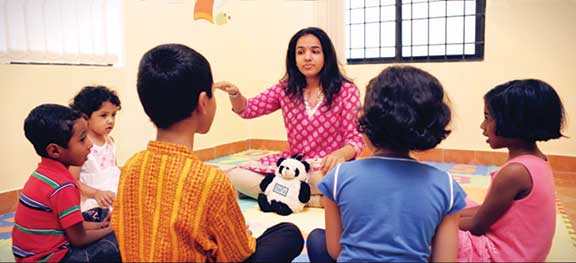Bindu Subramaniam
There is a wide body of research that points to the benefits of structured music education. This column, which will be published every alternate month, will expand on various aspects of this research with a focus on topics related to STEAM education, social emotional learning, and the role that the arts play in developing a new generation of global citizens.
Our sphere of responsibility as educators seems to be expanding every day. We’re not only expected to be subject matter experts, but we are also in charge of children’s holistic development. We need to be aware of the latest educational trends and know how to incorporate them into our everyday learning. We need to know how to teach our children to be kind, empathetic, and self-aware, but also critical thinkers, team players, and excellent communicators. Most educators I know, are always willing to step up, learn more, do more and be more. But the questions to ask are first – why? And secondly – how? Why are these things critical? How do we implement them?
Empathy and kindness everyday
Empathy has emerged as one of the most important traits for human beings to have. Empathy is being able to respond to what someone else is feeling, being able to relate to them and being kind. Studies have shown that children who are more empathetic, have advantages in many spheres:
• They are usually more engaged in the classroom
• They have superior communication skills
• They have higher recorded academic achievement
• They have more positive relationships
• They have fewer emotional disorders
• They are less likely to be involved in bullying
According to research, not only do adults respond well to empathy and kindness, but animals and infants do too! A generation ago, when I was in school, teaching us young people to be “good” was done through ‘Moral Science’ classes. A special class is usually held once a week, with a 50-page notebook and a complete lack of interest. We were often told moral stories, parables, and all about the evils of modern society. And to really make sure that we imbibed everything we were taught, we were given a test on moral science and general science, where questions would range from, “What lesson did you learn from the Thirsty Crow?” to “Who was the Iron Man of India?” Mercifully, now, the education system has realized that this isn’t quite the way to instill values in children.

To get children to be empathetic, we need to incorporate it into everything we do. We need to model the behaviour, and gently introduce concepts in a way where they don’t feel like they are being thrust upon children and will be examined at the end of the year. Having an empathetic teacher in the early years makes it much more likely that students will be empathetic. Through our SaPa in Schools music program, we use songs to discuss the ideas around empathy without necessarily forcing children to understand the terminology. We encourage role-playing, storytelling, and walking in someone else’s shoes. All of these are fun and engaging ways to model and teach empathy, and they can be a regular part of your lesson plan, where you don’t have to compromise on other learning goals.
Students who take part in these activities tend to internalize the ideas of kindness and empathy and make them second nature.
Empathy is a huge part of Social Emotional Learning, which is critical for students to survive and thrive. Coping with crisis and learning in difficult circumstances is only possible when the social and emotional needs of students are met. SEL also continues to be important when children enter the more stressful phases of higher education and working. Over time, successful people are the ones who are shown to be more resilient, have a growth mindset, and are gritty. These qualities and SEL are more accurate in predicting success than IQ.
SEL and STEAM
While looking at the intersection of Social Emotional Learning and STEAM, it is important to remember that the goal of Science, Technology, Engineering, Arts, and Mathematics is not just academic achievement but creating human-centred solutions for the next generation. STEAM professionals must be critical thinkers and problem solvers, but also empathetic and compassionate human beings so that we can create better solutions for global problems. Technology must align with humanity’s goals.
Teaching SEL in a STEAM classroom gives students the ability to understand humanity, call out inequality, and discrimination, and think of how they can contribute to a better living environment.
Policy frameworks
There have been a few recent directives in this direction, underlining the importance of life skills and SEL as a part of education:
• The Central Board of Secondary Education (CBSE) has said that the education system must align more closely with the real world, and 5% of questions in every subject will be around social, cultural and environmental factors.
• The 2019 ASER Report by Pratham clearly states that life skills must be integrated into the school curriculum.
• The 2020 National Education Policy states the SEL is imperative to “develop good human beings capable of rational thought and action, possessing compassion and empathy”.
So, as we move forward as educators, envisioning, designing and implementing curriculum for the leaders of the 21st century, the best thing we can do is model empathy, incorporate empathy, and make SEL a part of everything that we do.
The author is a singer-songwriter, music educator, co-founder and CEO of SaPa – Subramaniam Academy of Performing Arts. Her vision is to take the benefits of music education to every learner. She can be reached at bindu@sapaindia.com.
